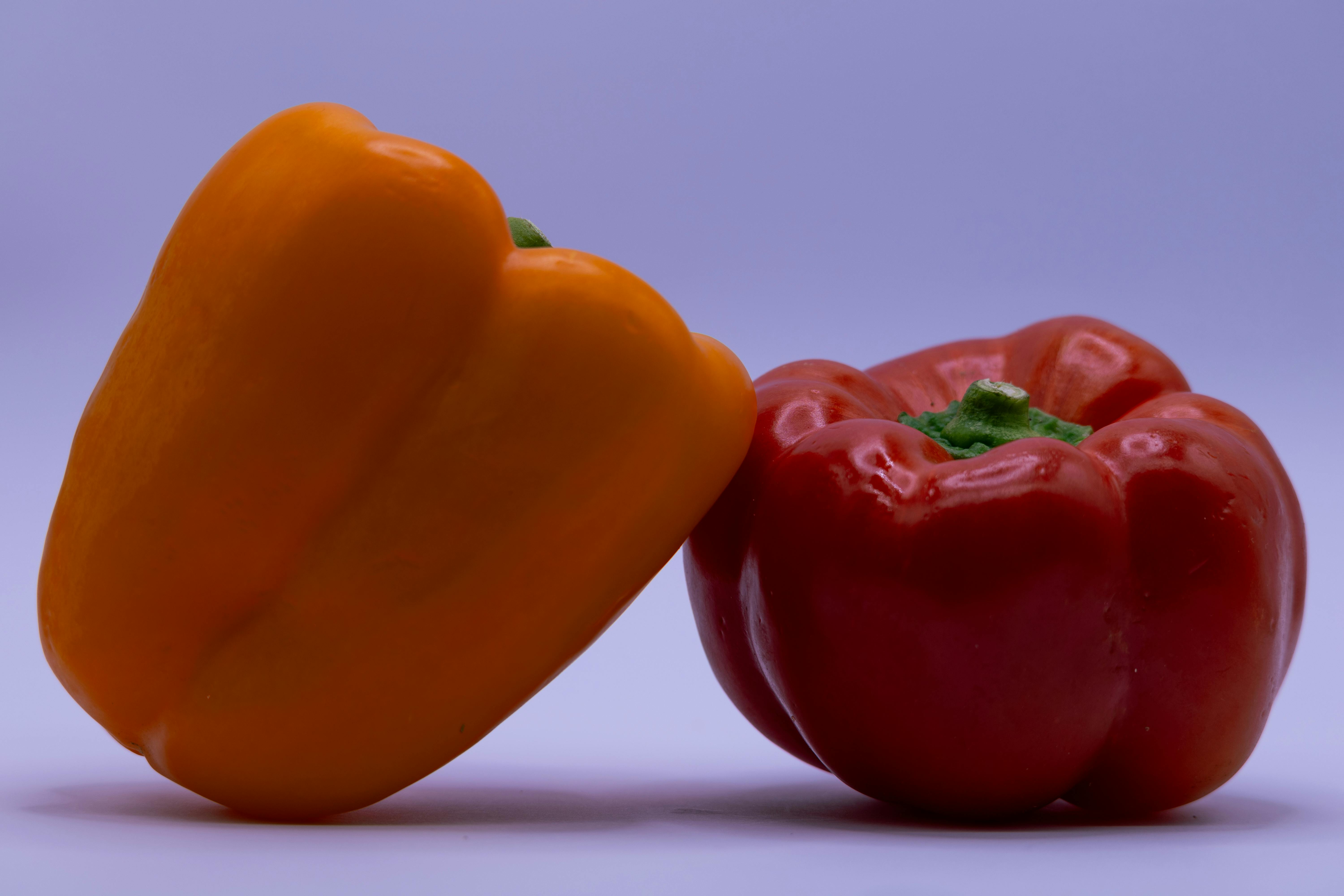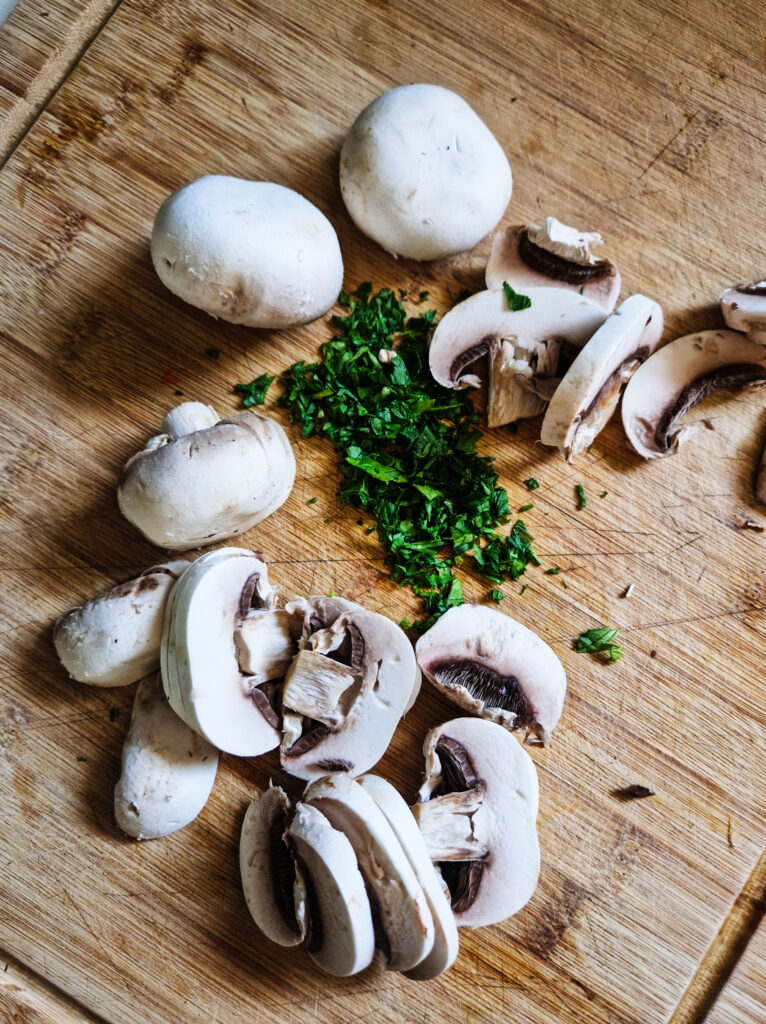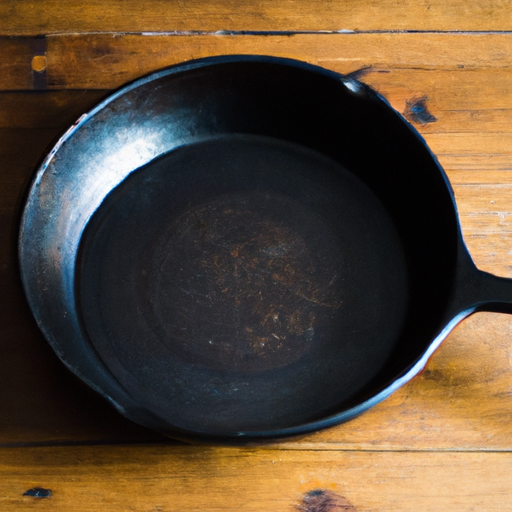If you’re an avid home cook or even a casual dabbler in the culinary arts, chances are you’ve heard about the wonders of cooking with cast iron. This classic cookware not only retains and evenly distributes heat, but it also imparts a unique flavor to your dishes. But here’s the thing, my friend – owning a cast iron pan is not just about flipping pancakes and searing steaks, it’s about understanding how to properly care for this kitchen workhorse. In this article, we’ll share some invaluable tips on how to keep your cast iron in tip-top shape, ensuring it lasts for generations to come. So grab your apron and get ready to master the art of caring for your beloved cast iron cookware!
Choosing the Right Cast Iron Cookware

Understanding the different types of cast iron cookware
When it comes to choosing the right cast iron cookware for your kitchen, it’s important to understand the different types that are available. There are various options to consider, such as skillets, Dutch ovens, grill pans, and even specialty pieces like cornbread pans or waffle irons. Each type has its own unique features and benefits, so it’s worth taking the time to research and decide which one will best suit your cooking needs.
Considering the size and weight of the cookware
Another important factor to consider when choosing cast iron cookware is the size and weight of the pieces. Cast iron is known for its durability and excellent heat retention, but it can be quite heavy. If you’re planning on using your cookware for everyday cooking, you may want to opt for smaller, lighter pieces that are easier to handle. On the other hand, if you’re looking for cookware to use for large family gatherings or special occasions, larger and heavier pieces may be more appropriate.
Examining the quality and craftsmanship of the cast iron
The quality and craftsmanship of the cast iron cookware you choose are also crucial. Look for cookware that is made from high-quality materials and has a smooth, even surface. Cast iron that is well-made and properly seasoned will provide excellent heat distribution and retention, ensuring that your food cooks evenly and thoroughly. Avoid cookware with any visible flaws or rough surfaces, as these may affect the cooking performance and durability of the cast iron.
Seasoning Your Cast Iron Cookware
Understanding the purpose of seasoning
Seasoning your cast iron cookware is a crucial step in maintaining its quality and ensuring it lasts for years to come. Seasoning creates a natural non-stick surface and helps protect the cookware from rust and stains. It also adds a unique flavor to your food and enhances the overall cooking experience. By seasoning your cast iron properly, you’ll be able to enjoy the benefits of cooking with this versatile and durable cookware.
Preparing the cast iron for seasoning
Before seasoning your cast iron cookware, it’s essential to clean it thoroughly to remove any dirt, rust, or leftover food particles. Start by using hot water and a stiff brush to scrub away any residue. Avoid using soap or harsh detergents, as they can strip away the seasoning. Once the cookware is clean, dry it thoroughly to prevent any moisture from lingering, which could lead to rust formation.
Applying the seasoning to the cookware
To season your cast iron cookware, start by applying a thin layer of oil or fat to the surface. You can use various oils or fats, such as vegetable oil, canola oil, or even bacon grease. Make sure to coat the entire surface, including the handles and any exposed metal. Once the cookware is coated, place it in the oven upside down and bake it at a high temperature, typically around 400-450°F (200-230°C), for an hour or so. This process helps the oil or fat penetrate the iron and create a protective layer.
Maintaining the seasoning over time
To maintain the seasoning of your cast iron cookware, it’s essential to clean it properly after each use. Avoid using soap and instead use hot water and a stiff brush to remove any food residue. Dry the cookware thoroughly to prevent rust formation. After cleaning, it’s a good idea to apply a thin layer of oil or fat to the surface to replenish the seasoning. With regular maintenance and proper care, your cast iron cookware will continue to provide excellent cooking performance for many years.
Proper Cleaning Techniques
Avoiding soap and harsh detergents
When it comes to cleaning your cast iron cookware, it’s best to avoid using soap or harsh detergents. These can strip away the seasoning and reduce the non-stick properties of the cookware. Instead, use hot water and a stiff brush or sponge to scrub away any food residue. The heat and friction from scrubbing will help remove any leftover particles without compromising the seasoning.
Using hot water and a stiff brush
To clean your cast iron cookware, start by rinsing it with hot water to loosen any food residue. Then, use a stiff brush or sponge to scrub away any leftover bits. The heat from the water combined with the scrubbing action will help remove any stubborn particles. Make sure to scrub all the surfaces, including the corners and crevices, to ensure a thorough cleaning.

Removing stubborn food residue
If you encounter stubborn food residue that won’t come off with just hot water and a brush, you can use a little bit of salt or baking soda as an additional cleaning agent. Sprinkle a small amount of salt or baking soda onto the surface of the cookware and use the brush to scrub it in. The abrasive texture of the salt or baking soda will help loosen the stubborn residue.
Drying the cookware thoroughly
After cleaning your cast iron cookware, it’s important to dry it thoroughly to prevent rust formation. Use a clean towel to wipe away any excess moisture and then place the cookware on the stove over low heat for a few minutes to ensure it’s completely dry. You can also dry it in the oven at a low temperature for about 10-15 minutes. Once the cookware is dry, it’s ready for storage or the next cooking session.
Dealing with Rust and Stains
Preventing rust from developing
Prevention is the key when it comes to dealing with rust on your cast iron cookware. To prevent rust from developing, make sure to dry the cookware thoroughly after each use. Store it in a dry place away from moisture, such as inside a cabinet or on a shelf. If the cookware does get wet, dry it immediately to prevent any moisture from sitting on the surface and causing rust.
Removing rust from cast iron
If you do notice rust on your cast iron cookware, don’t panic. Rust can be removed with a little bit of effort. Start by scrubbing the affected area with a stiff brush or steel wool to remove the rust. Once the rust is removed, rinse the cookware with hot water and dry it thoroughly. To prevent future rust formation, you may want to season the cookware again to create a protective layer.
Treating stubborn stains
Stubborn stains on your cast iron cookware can be treated with a mixture of water and baking soda or water and vinegar. Make a paste using either baking soda or vinegar and apply it to the stained area. Let it sit for a few minutes, then scrub with a brush or sponge. Rinse the cookware with hot water and dry it thoroughly. Repeat the process if necessary until the stains are completely removed.
Storing Your Cast Iron Cookware
Determining the best storage option
When it comes to storing your cast iron cookware, it’s important to choose the best option that suits your kitchen space and needs. You can store your cookware in a cabinet, on a shelf, or even on a pot rack. Consider the size and weight of your cookware and make sure you have enough space to accommodate it. Choose a location that is dry and away from any sources of moisture.
Stacking vs. hanging
Depending on the size and shape of your cookware, you may choose to stack or hang it for storage. Stacking is a good option if you have limited space or if you have multiple pieces that can fit together neatly. Make sure to place a piece of paper or a towel between each piece to prevent them from scratching each other. Hanging is another option, especially for larger pieces like Dutch ovens or grill pans. You can hang them using S-hooks or a sturdy pot rack.
Protecting the cookware from moisture
Moisture is the enemy of cast iron cookware, as it can lead to rust formation. To protect your cookware from moisture, make sure it is thoroughly dry before storing it. If you’re storing it in a cabinet or on a shelf, consider placing a desiccant packet or a piece of chalk inside to absorb any excess moisture. You can also use a breathable fabric cover or a plastic bag to protect the cookware from dust and moisture.
Avoiding Common Mistakes
Using metal utensils
One common mistake many people make when cooking with cast iron is using metal utensils. Metal utensils can scratch the seasoning and damage the non-stick surface of the cookware. To avoid this, use wooden, silicone, or nylon utensils that are gentle on the cast iron. These types of utensils won’t scratch the surface and will help preserve the seasoning, ensuring your cookware lasts longer.

Exposing the cookware to extreme temperature changes
Another common mistake to avoid is exposing your cast iron cookware to extreme temperature changes. Rapid changes in temperature can cause the cookware to warp or crack. To prevent this, always allow your cast iron to heat up or cool down gradually. Start cooking on low or medium heat and gradually increase it if needed. Similarly, when cleaning the cookware, let it cool down gradually before rinsing it with hot water.
Storing food in the cast iron for extended periods
It’s not recommended to store food in cast iron cookware for extended periods. The acidity of certain foods can strip away the seasoning and affect the flavor of the food. It’s best to transfer any leftover food to a separate container before storing it in the refrigerator. If you have any remaining residue after cooking, make sure to clean it thoroughly before storing the cookware.
Overheating the cookware
Cast iron cookware retains heat very well, so it’s important not to overheat it. Overheating can damage the seasoning and affect the cooking performance of the cookware. Always start cooking on low to medium heat and adjust as necessary. Avoid using high heat unless specifically mentioned in the recipe. By using moderate heat, you’ll achieve excellent cooking results and prolong the life of your cast iron.
Restoring Old or Damaged Cast Iron
Identifying signs of damage or wear
If you have old or damaged cast iron cookware, it’s possible to restore it and bring it back to its former glory. Start by inspecting the cookware for any signs of damage or wear. Look for cracks, warping, or rough surfaces. If there are any major issues, it may be best to retire the cookware. However, if it’s just minor wear and tear or some rust and stains, it’s worth trying to restore it.
Removing built-up seasoning
Before restoring your cast iron cookware, you’ll need to remove any built-up seasoning. Depending on the severity, this can be achieved by scrubbing with a stiff brush or steel wool, or by using a lye-based oven cleaner. Make sure to wear gloves and follow the instructions on the cleaner. After removing the seasoning, rinse the cookware thoroughly with hot water and dry it completely.
Re-seasoning the cookware
Once the built-up seasoning is removed, it’s time to re-season your cast iron cookware. Follow the seasoning process mentioned earlier by applying a thin layer of oil or fat to the surface and baking it in the oven at a high temperature for an hour or so. Repeat this process multiple times to build a new, protective layer of seasoning. With patience and a few seasoning cycles, your restored cast iron cookware will be ready for cooking.
Rehabilitating rusty or heavily stained cast iron
For cast iron cookware that is rusty or heavily stained, a more intensive restoration process may be required. Start by scrubbing the surface with steel wool or a wire brush to remove the rust or stains. Once the surface is clean, follow the re-seasoning process mentioned earlier to create a new protective layer. You may need to repeat this process several times, depending on the severity of the rust or stains. With perseverance, your cast iron cookware can be rehabilitated and brought back to its original condition.
Tips for Cooking with Cast Iron
Preheating the cookware before adding food
One of the key tips for cooking with cast iron is to preheat the cookware before adding your ingredients. Cast iron takes longer to heat up compared to other types of cookware, but once it’s hot, it retains heat exceptionally well. Preheating allows the cookware to evenly distribute the heat, resulting in more consistent and efficient cooking. Whether you’re searing a steak or sautéing vegetables, preheating your cast iron will help achieve that perfect golden crust or a delicious caramelization.
Using oil or fat for cooking
When cooking with cast iron, using oil or fat is essential to enhance the cooking process. Adding oil or fat to the cookware creates a natural non-stick surface and helps prevent food from sticking. It also aids in the even distribution of heat and provides a rich flavor to your dishes. Use a high smoke point oil, such as vegetable oil, canola oil, or even clarified butter, and make sure to coat the entire surface of the cookware before adding your ingredients.
Avoiding acidic or highly alkaline ingredients
While cast iron is incredibly versatile, it’s important to avoid cooking acidic or highly alkaline ingredients in it for extended periods. Acidic ingredients, such as tomatoes or citrus fruits, can react with the iron and affect the flavor of the food. Highly alkaline ingredients, like baking soda or baking powder, can strip away the seasoning and cause a metallic taste. If you need to cook these ingredients, make sure to use enameled cast iron or stainless steel cookware instead.
Taking advantage of the heat retention properties
One of the greatest advantages of cooking with cast iron is its exceptional heat retention properties. Cast iron is perfect for dishes that require slow, steady cooking or for keeping food warm at the table. Once heated, cast iron retains heat for a long time, so you can use it as a serving dish and enjoy your meal at a leisurely pace. You can also take advantage of this heat retention by using lower heat settings and allowing the cookware to do the work for you.
Enhancing the Non-Stick Surface
Cooking fatty foods initially
To enhance the non-stick surface of your cast iron cookware, it’s recommended to cook fatty foods initially. Foods like bacon, sausages, or fried chicken are excellent for building up a natural non-stick layer. The fats released during the cooking process help create a patina on the surface of the cookware, making it more non-stick over time. The more you cook with fatty foods, the better the non-stick performance of your cast iron will be.
Building the non-stick layer over time
Building a non-stick layer takes time and repeated use. With each use, the oil or fat penetrates the iron, creating a smooth, non-stick surface. Remember to apply a thin layer of oil or fat before and after each use to help maintain and build the non-stick layer. The more you cook with your cast iron cookware, the better it will perform, providing you with a natural non-stick surface that rivals commercial non-stick coatings.
Maintaining the non-stick surface
To maintain the non-stick surface of your cast iron cookware, it’s important to follow proper cleaning and seasoning techniques. Avoid using harsh cleaning agents or abrasive scrubbers that can damage the surface. Instead, use hot water and a stiff brush to remove any food residue, and dry the cookware thoroughly to prevent rust formation. Applying a thin layer of oil or fat after each use will help maintain the non-stick surface and ensure the longevity of your cast iron.
Conclusion
Choosing the right cast iron cookware, seasoning it properly, cleaning it with care, and understanding how to store and maintain it will allow you to make the most of this versatile and durable kitchen staple. By following the tips and techniques provided in this guide, you’ll be able to cook with confidence and enjoy the many benefits of cast iron for years to come. So go ahead, explore the world of cast iron cooking and unlock a whole new level of culinary possibilities in your own kitchen.

